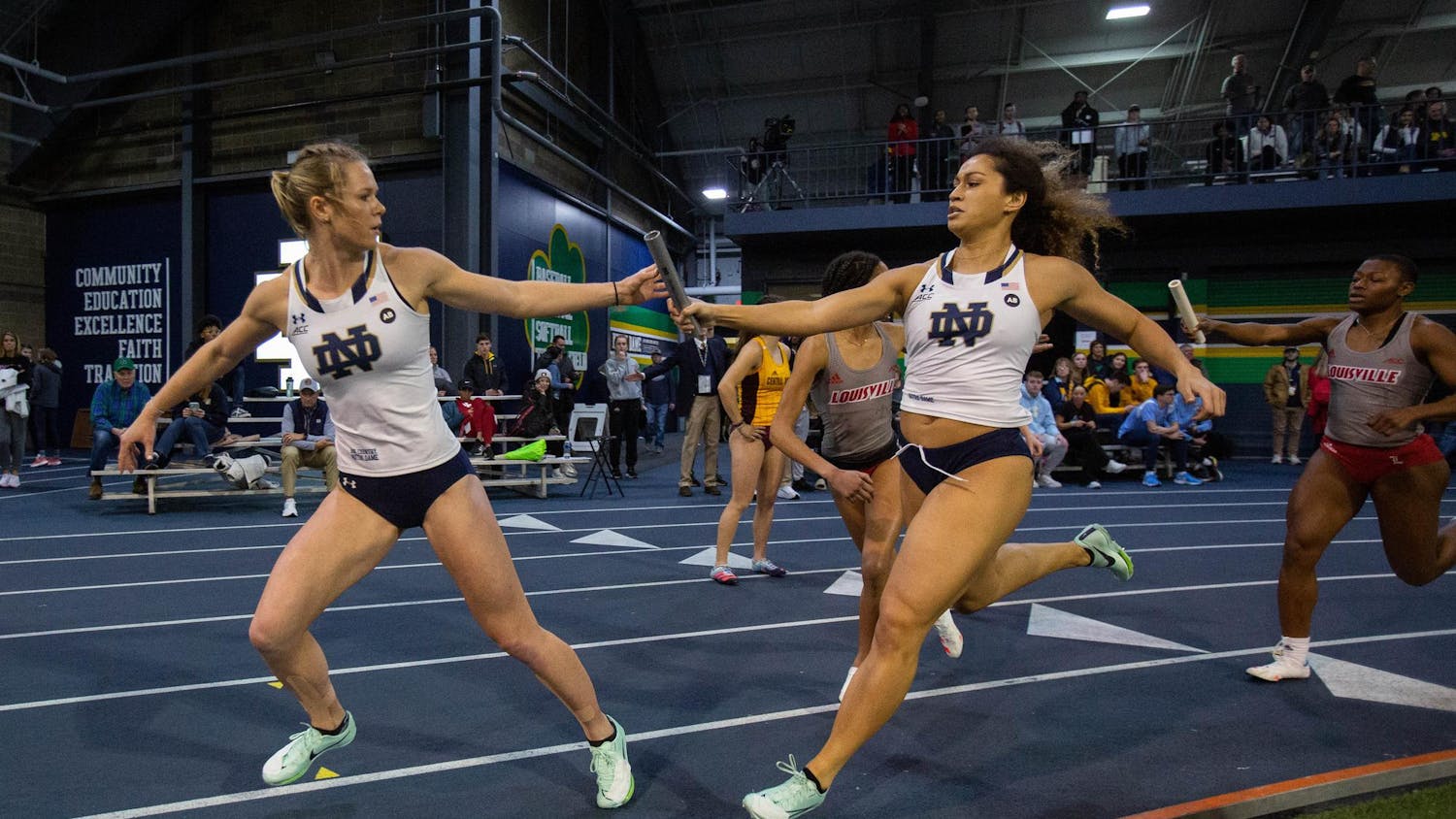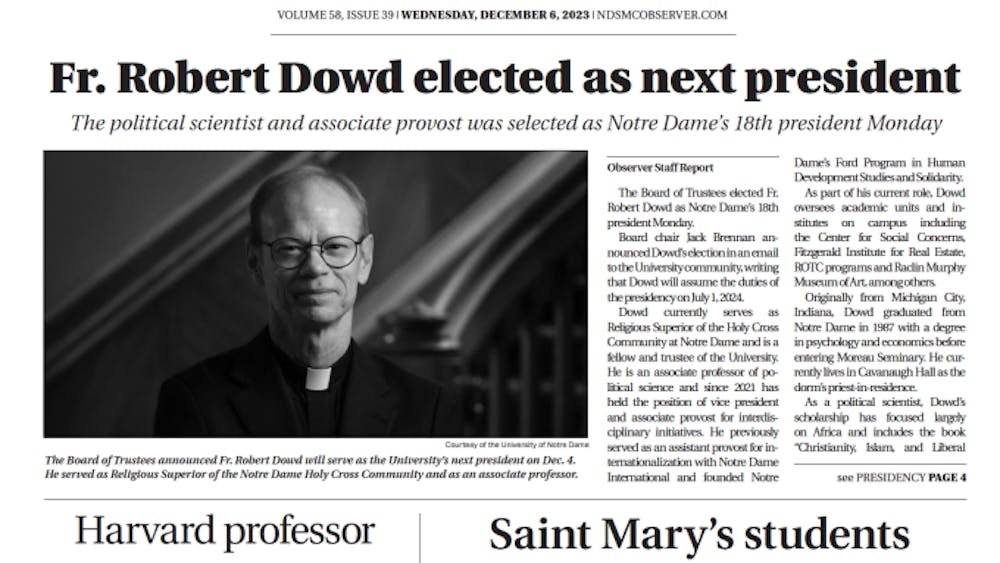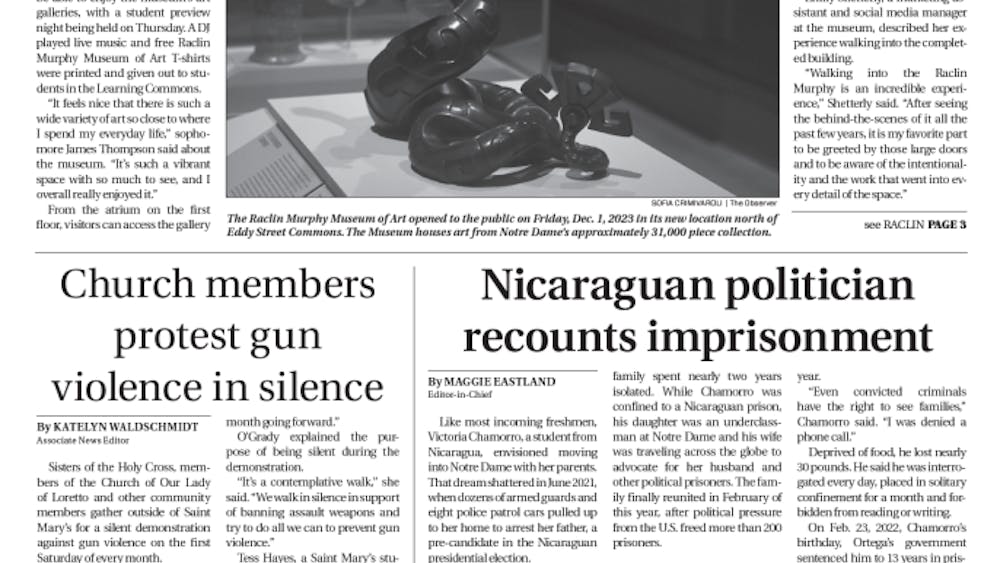Editor's note: This is the second in a five-part series examining issues in the Iraq War.
Reflections on the news media's coverage of the Iraq War likely conjures up memories of last March's "shock and awe" bombing campaign over Baghdad, toppling statues of deposed Iraqi leader Saddam Hussein and embedded journalists like Fox News' Geraldo Rivera.
Looking back on it, the media's overall coverage of the conflict in Iraq has been effective in keeping the public informed, according to Notre Dame professors. It also introduced several "firsts" in terms of how news is presented, they said.
A marketplace of ideas
"If you put it all together ... you'd probably say the media is working as it's supposed to - as a marketplace of ideas," said Gary Sieber, an adjunct instructor of broadcast journalism for the Department of Film, Television and Theater and a staff member of the South Bend NBC affiliate WNDU. "There are a lot of different sources out there."
Indeed, media coverage of the Iraq War was marked not only by the presence of additional sources of news, but also by more time devoted to reporting that news. Cable news stations like CNN, Fox News and MSNBC presented nearly 24-hour coverage of the conflict and the events leading up to it, and a proliferation of internet news sources offered different perspectives that challenged America's mainstream media coverage.
At the same time, Sieber said, the public was forced to take the initiative and consult multiple sources if it wanted to obtain truly balanced news.
"It's very important for every person to pay attention and not just get their news from one source," he said.
Coverage in 'real' time
The media coverage of the Iraq War also differed from previous conflicts in its ability to provide information on events in 'real' time, according to Jack Colwell, an American Studies professor and columnist for the South Bend Tribune.
"People are seeing instantly what is going on and they're reacting instantly as a result," he said. "They're not waiting for several days for dispatches to arrive to the United States."
In past wars like Vietnam, Sieber said, reports on battles were often presented two or three days after they occurred due to the lengthy filming, editing and transporting process. He added that today the presence of so-called embedded journalists and new technology allows the American public to get up close and personal with the conflict and watch aspects of a war from their living rooms never before seen.
"I think it's going to be something that's looked at as a 'must' in the future," Colwell said.
At the same time, however, Sieber cautioned that instant coverage often provides excessive detail that does not always contribute to the bigger picture.
"The nice thing about [the older system] was you had two or three eyes or gatekeepers to look at it [and evaluate its importance]," he said. "Now you've got a reporter corresponding from the back of a ... tank in the desert of Iraq. It's riveting; it gives you a perspective of what it's like but what does it really tell you about the overall conflict?"
News media making news
Perhaps most interestingly, coverage of the Iraq War was characterized not only by news of the conflict but also by conflict created by the news media itself.
Celebrity journalist Rivera drew the ire of the U.S. military early in the war when he motioned for his cameraman to film the ground as he drew a map of Iraq in the sand and outlined the movements of American troops. The reporter subsequently announced that he would continue his coverage of the war from Kuwait.
The BBC also came under fire in January after a judicial inquiry criticized its journalistic integrity when it used false information to accuse the British government of "sexing up" knowledge of Iraq's weapons of mass destruction. When the news reached the public, it led several top editors to resign and forced the organization's board of governors to publicly apologize to British Prime Minister Tony Blair.
"It's something you don't expect from ... the BBC," Colwell said. "It's [problematic] when you have one of the most respected news agencies involved in something like this."
Both he and Sieber, however, agreed that the incident alone would likely not have long term adverse effects on the public's perception of the media.
Biased coverage?
To some critics, however, the event provides further proof of the existence of biased media coverage of the conflict, though the direction of the perceived bias depends upon who is asked.
In an article posted on the Fairness and Accuracy in Reporting (FAIR) organization's Web site, for example, the trade magazine Editor and Publisher accuses The New York Times of downplaying anti-war sentiments.
Additionally, a study by the University of Maryland's Center for International and Security Studies concluded that media coverage of the war failed to adequately challenge information provided by the Bush administration.
"Too many journalists acted as virtual stenographers for the current administration, in effect validating President Bush's linkage of terrorism, Iraq and weapons of mass destruction," Susan Moeller, director of the study, told Ascribe Newswire.
At the same time, the Bush administration has leveled its own criticisms against the media, charging that it excessively dwells on negative aspects of the campaign while routinely ignoring its positive benefits.
"[This war has produced] fewer casualties and less destruction than probably any war in history," Secretary of Defense Donald Rumsfeld said in August 2003. "Each setback in Iraq is repeated and repeated and repeated [in the media] as if it were 10 or 20 setbacks."
Colwell, however, defended the media's overall coverage of the war and said that the presence of complaints from both sides is a good sign.
"The news media has really called it as they see it," he said. "I think maybe that [the two-sided criticism] is a good sign. If you're going to get complaints, it's nice to get complaints from the two extremes."









